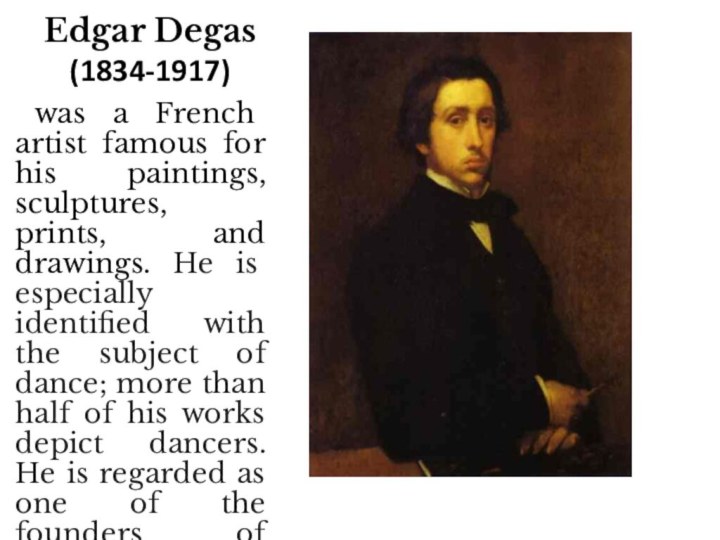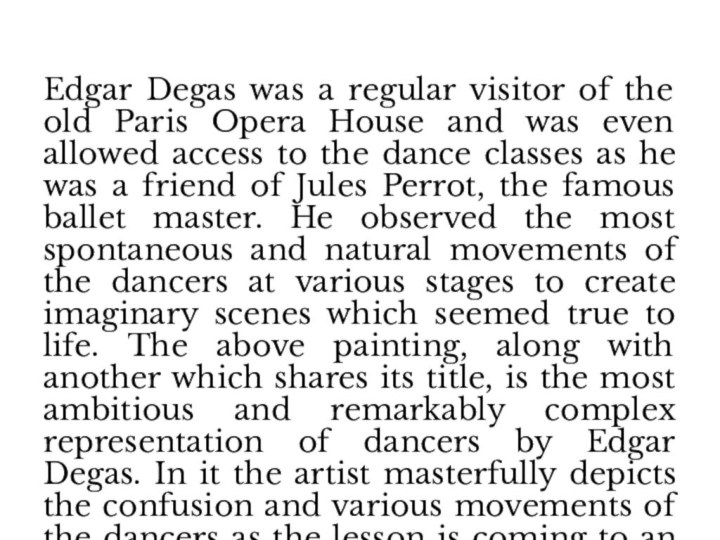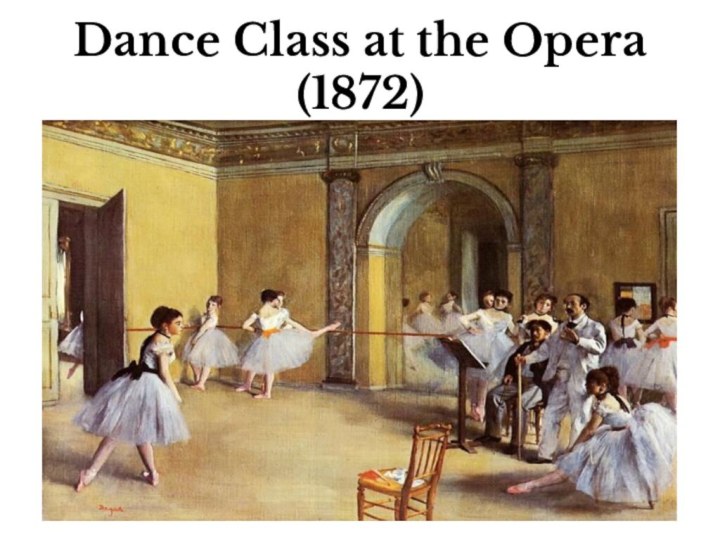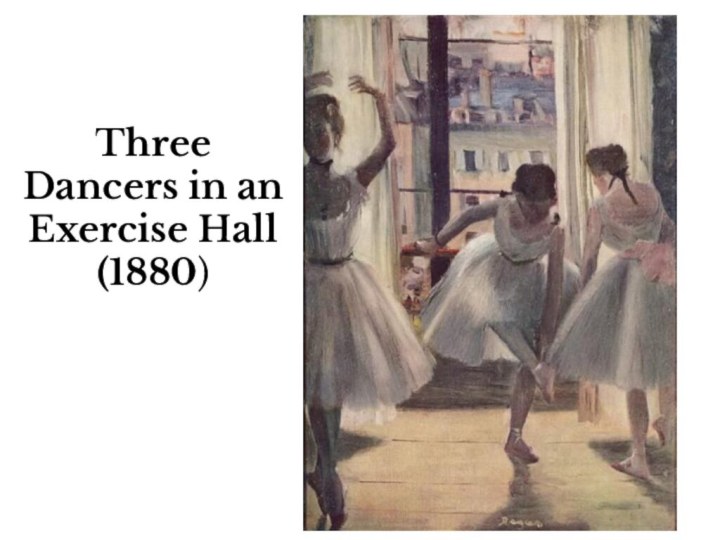- Главная
- Разное
- Бизнес и предпринимательство
- Образование
- Развлечения
- Государство
- Спорт
- Графика
- Культурология
- Еда и кулинария
- Лингвистика
- Религиоведение
- Черчение
- Физкультура
- ИЗО
- Психология
- Социология
- Английский язык
- Астрономия
- Алгебра
- Биология
- География
- Геометрия
- Детские презентации
- Информатика
- История
- Литература
- Маркетинг
- Математика
- Медицина
- Менеджмент
- Музыка
- МХК
- Немецкий язык
- ОБЖ
- Обществознание
- Окружающий мир
- Педагогика
- Русский язык
- Технология
- Физика
- Философия
- Химия
- Шаблоны, картинки для презентаций
- Экология
- Экономика
- Юриспруденция
Что такое findslide.org?
FindSlide.org - это сайт презентаций, докладов, шаблонов в формате PowerPoint.
Обратная связь
Email: Нажмите что бы посмотреть
Презентация на тему для 10 класса по теме Edgar Degas
Содержание
- 2. Little dancer aged fourteen
- 3. The model for this sculpture was a
- 4. Dance class (1834-1917)
- 5. Edgar Degas was a regular visitor of
- 6. Ballet Rehearsal (1834-1917)
- 7. Two Ballet Dancers(1879)
- 8. Dancers tying shoes (1883)
- 9. In the Dance Studio(1897)
- 10. Dance Class at the Opera (1872)
- 11. Скачать презентацию
- 12. Похожие презентации
Little dancer aged fourteen








































